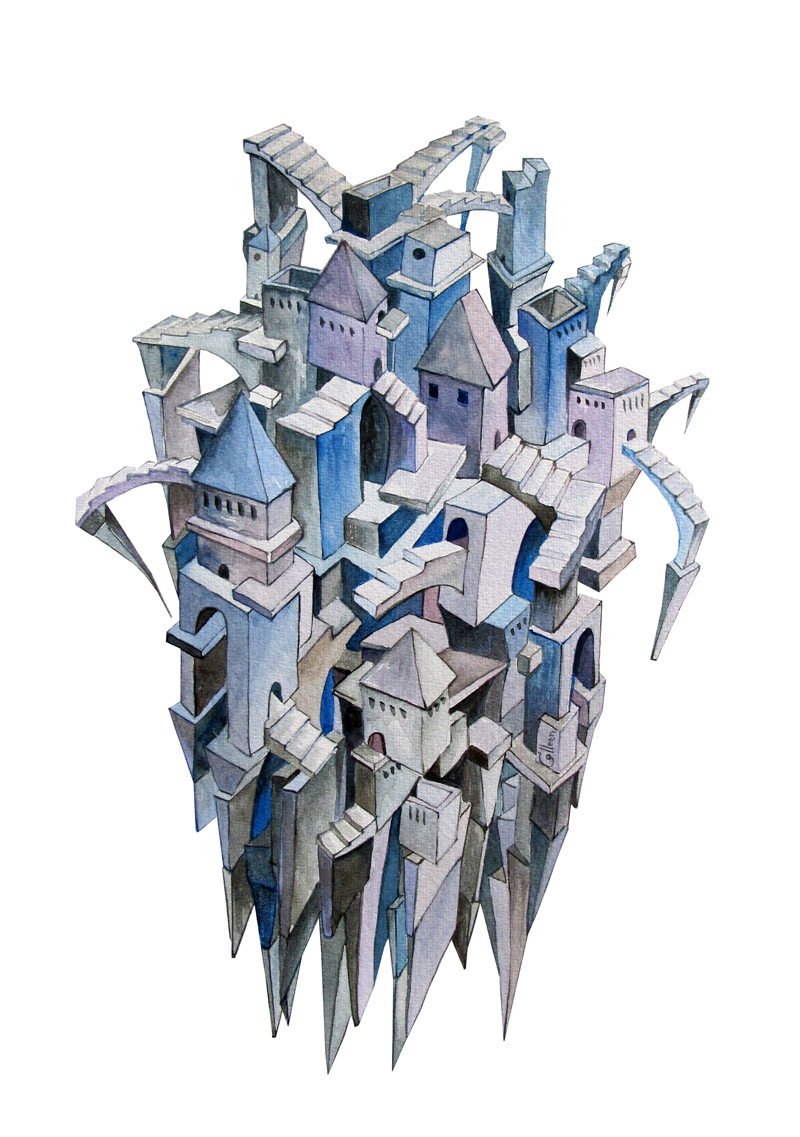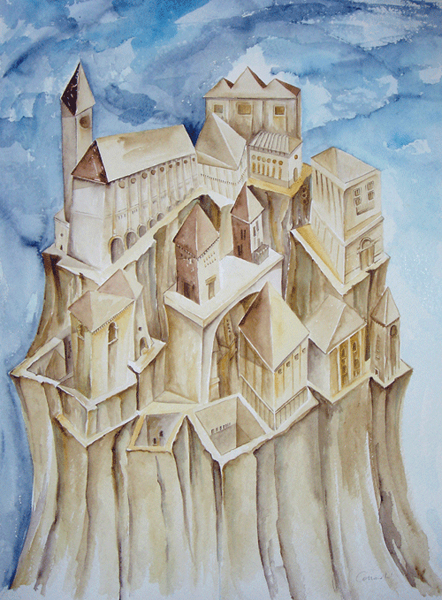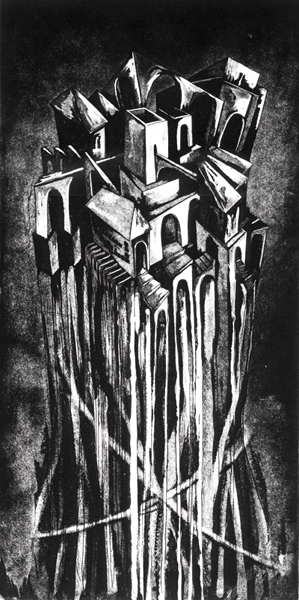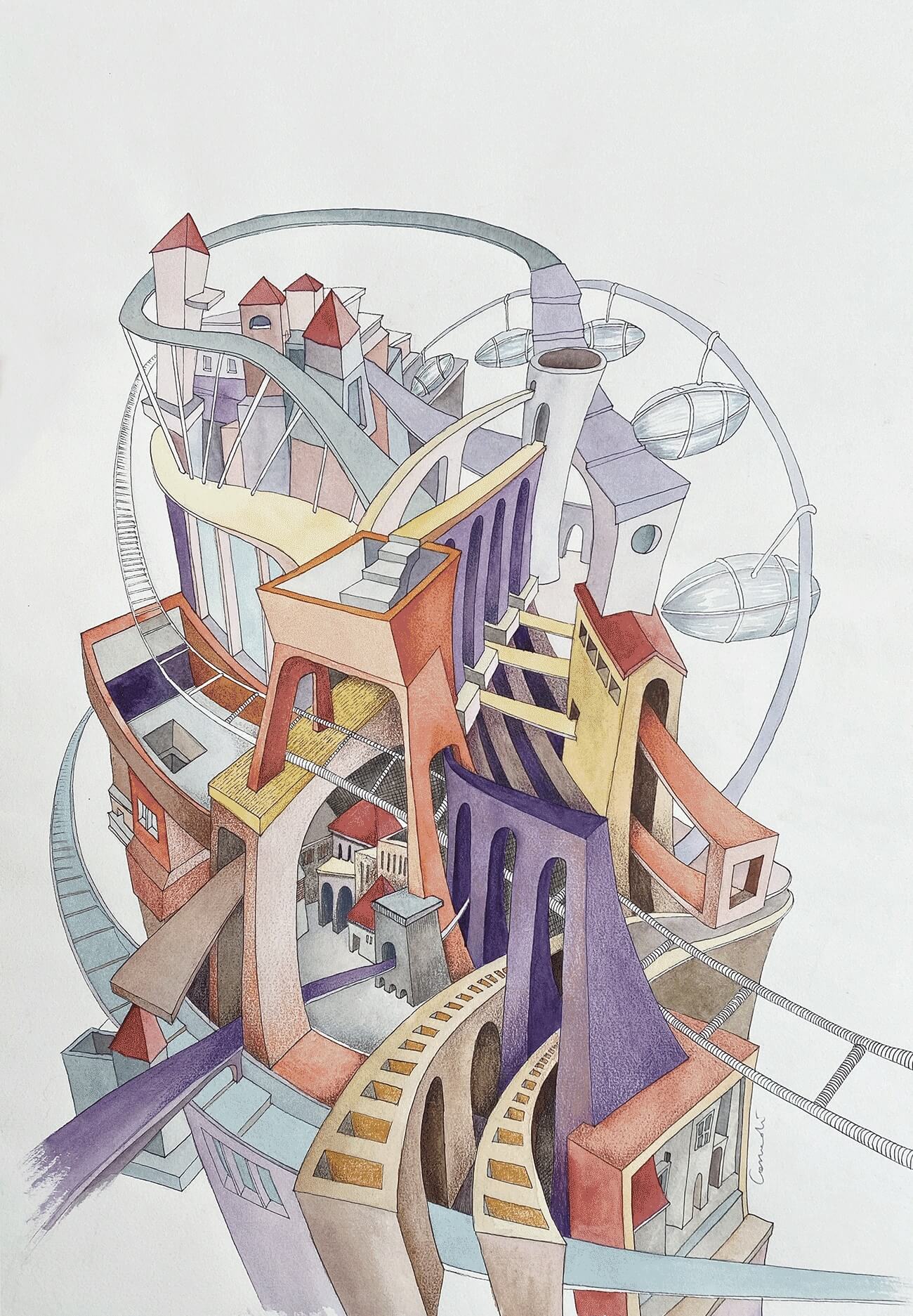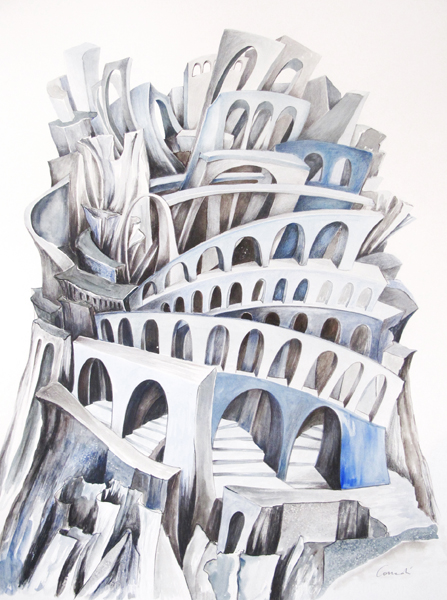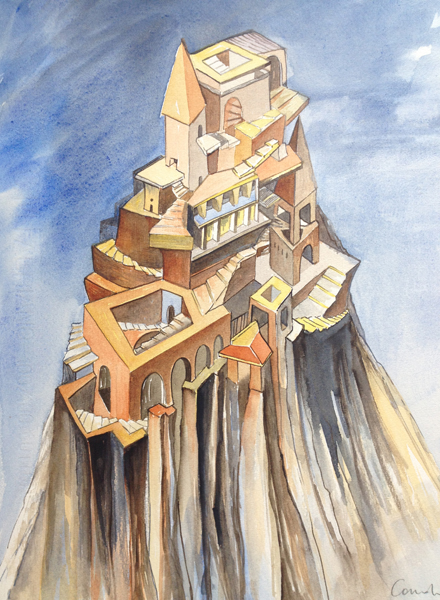Isaura, city of the thousand wells, is said to rise over a deep, subterranean lake. On all sides, wherever the inhabitants dig long vertical holes in the ground, they succeed in drawing up water, as far as the city extends, and no father. Its green border repeats the dark outline of the buried lake; an invisible landscape conditions the visible one; everything that moves in the sunlight is driven by the lapping wave enclosed beneath the rock's calcareous sky.
Consequently, two forms of religion exist in Isaura.
The city's gods, according to some people, live in the depths, in the black lake that feeds the underground streams. According to others, the gods live in the buckets that rise, suspended from a cable, as they appear over the edge of the wells, in the revolving pulleys, in the windlasses of the norias, in the pump handles, in the blades of the windmills that draw the water up from the drillings, in the trestles that support the twisting probes, in the reservoirs perched on stilts over the roofs, in the slender arches of the aqueducts, in all the columns of water, the vertical pipes, the plungers, the drains, all the way up to the weathercocks that surmount the airy scaffoldings of Isaura, a city that moves entirely upward.
The Invisible Cities by Italo Calvino
Measures 25 x 50 cm
 English
English
 Italian
Italian 

